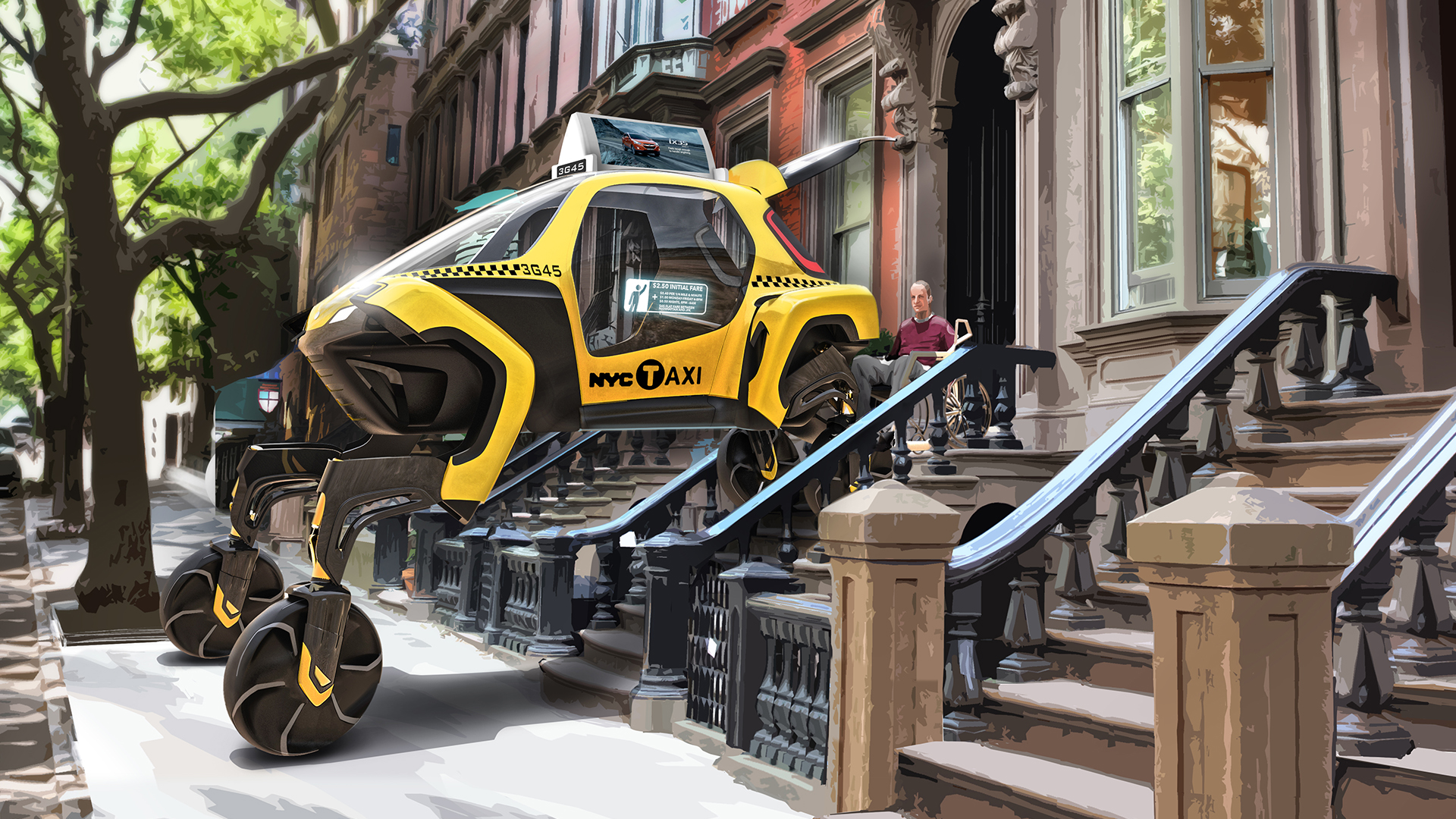
In January 2020, Hyundai revealed concept renders and CGI video of its Ultimate Mobility Vehicles (UMV) – essentially a pod with robotic legs and wheels that can traverse the world’s toughest landscapes.
Dubbed Hyundai Elevate, the original CES concept generated a small but short-lived buzz, but was largely written off as wild, blue sky thinking. However, Vice President Dr. John Suh, the man behind the concept and the person responsible for continuing the project’s work, is deadly serious about its real-world applications – as we discovered during a visit to his unassuming laboratory, named New Horizons Studio, in Fremont, San Francisco.
"Ever since we announced the Elevate project back in 2019, we have been working on the idea, building 1:8 scale models and trialling various technologies in harsh environments to see what works best," Suh explains.
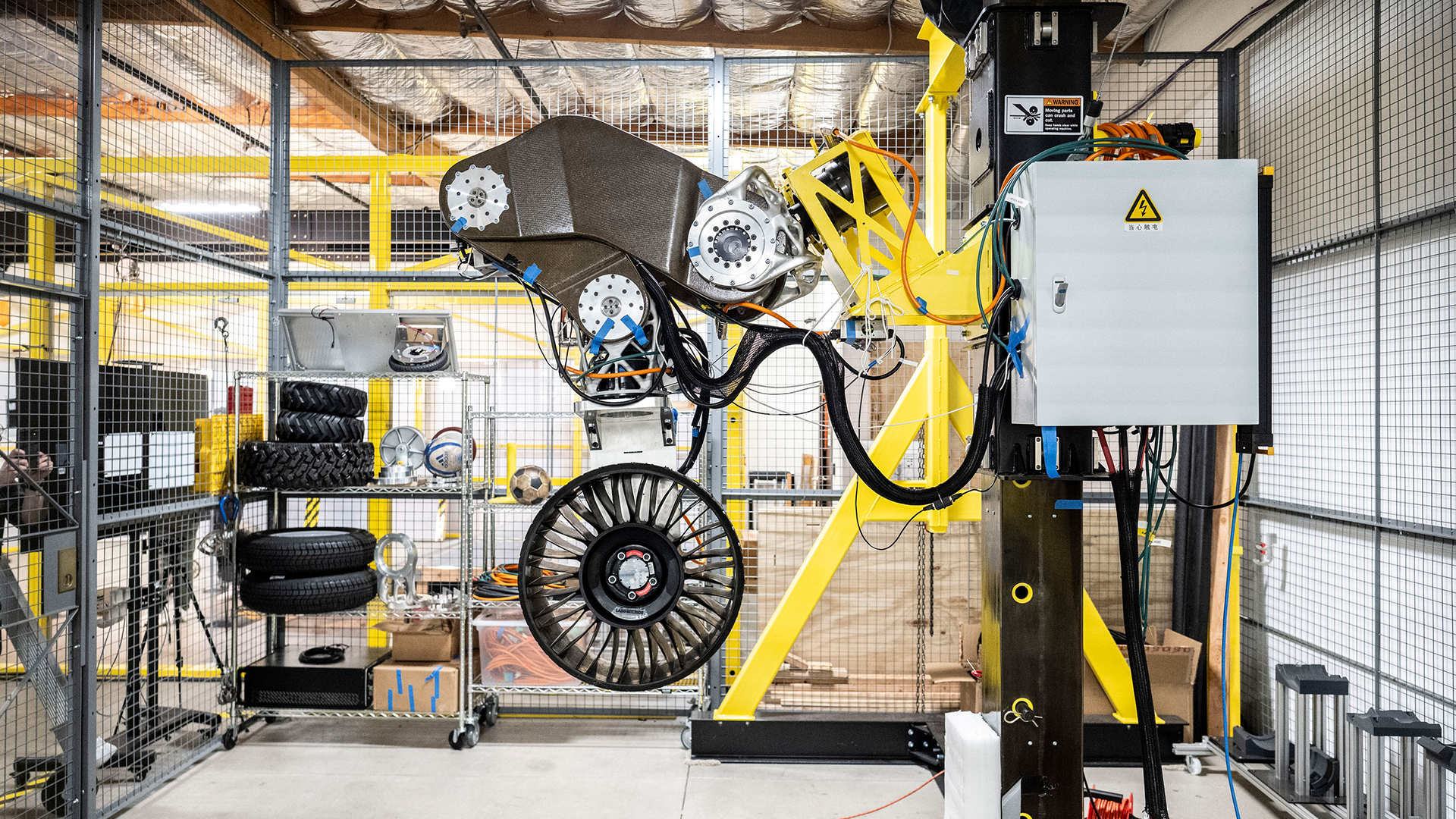
The small team of engineers and designers, which consists only of 11 permanent staff and a handful of freelancers, has been tasked with creating a suspension system that fuses the worlds of automotive and robotics to create a unique but highly capable vehicle with 'legs'.
Currently, the team has a number of smaller scale working models, but hidden away in a giant protective cage in its Fremont facility is a 1:1 scale version of its unique robotic suspension system. A proof of concept that could soon be the catalyst that sparks a full-size walking car.
Robots in disguise
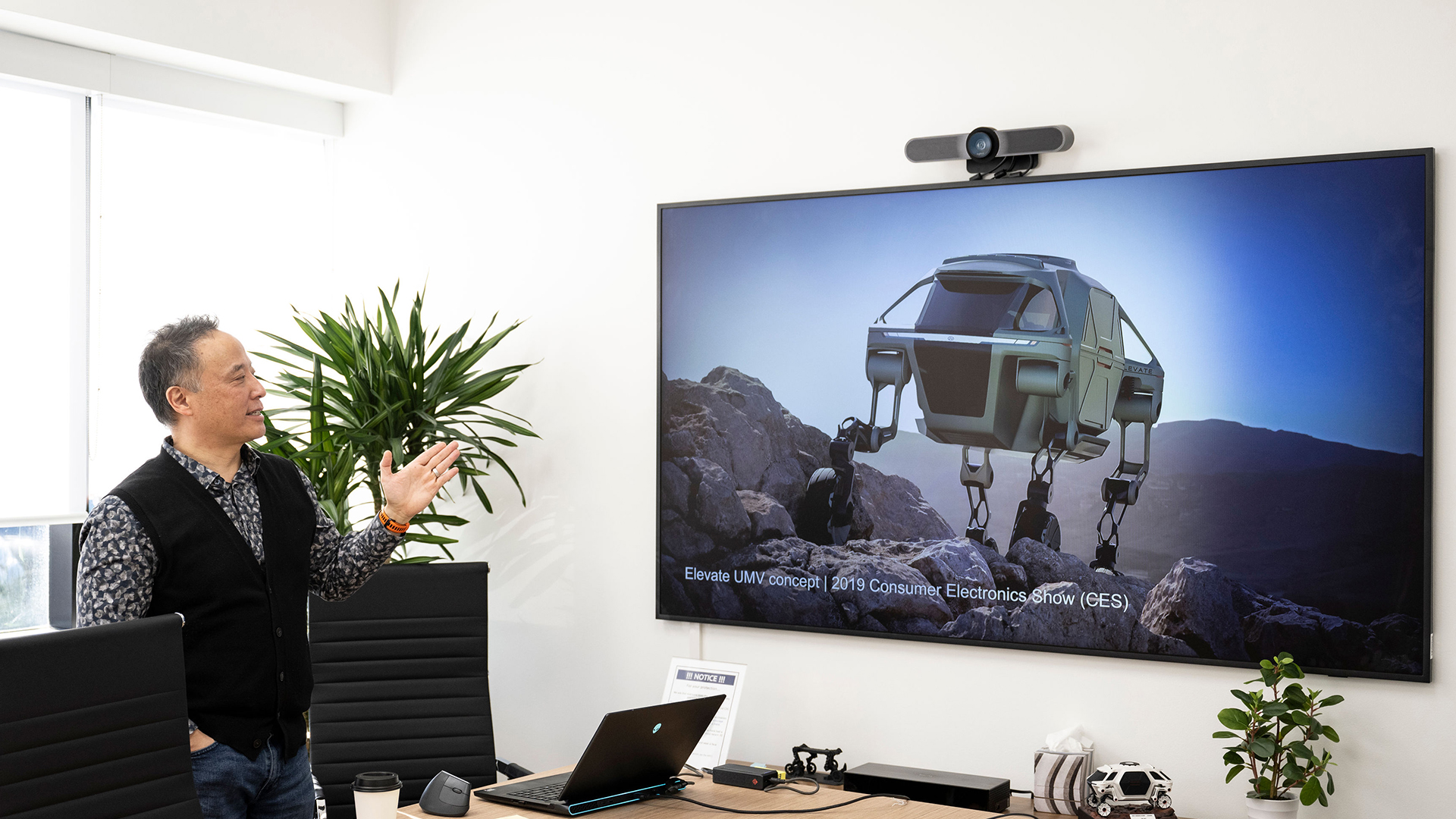
During its very first unveil, Dr. John Suh described the Elevate concept as "the world's first transformer-class vehicle", which was capable of cruising the streets like a regular electric car or truck, but could also rise on robotic legs and effectively walk its way across tough terrain.
"The original idea actually came from the top," explains Suh, referring to Hyundai chairman Euisun Chung. "After a discussion about how most of the land and usage in the U.S. in unpaved, we talked about a vehicle that could effectively walk, and that's how the idea was generated," Suh adds.
Since then, the team at New Horizons Studio has secured funding to produce a number of concepts, from the fully autonomous Elevate, to its manned TIGER X-1 and X-2 versions.
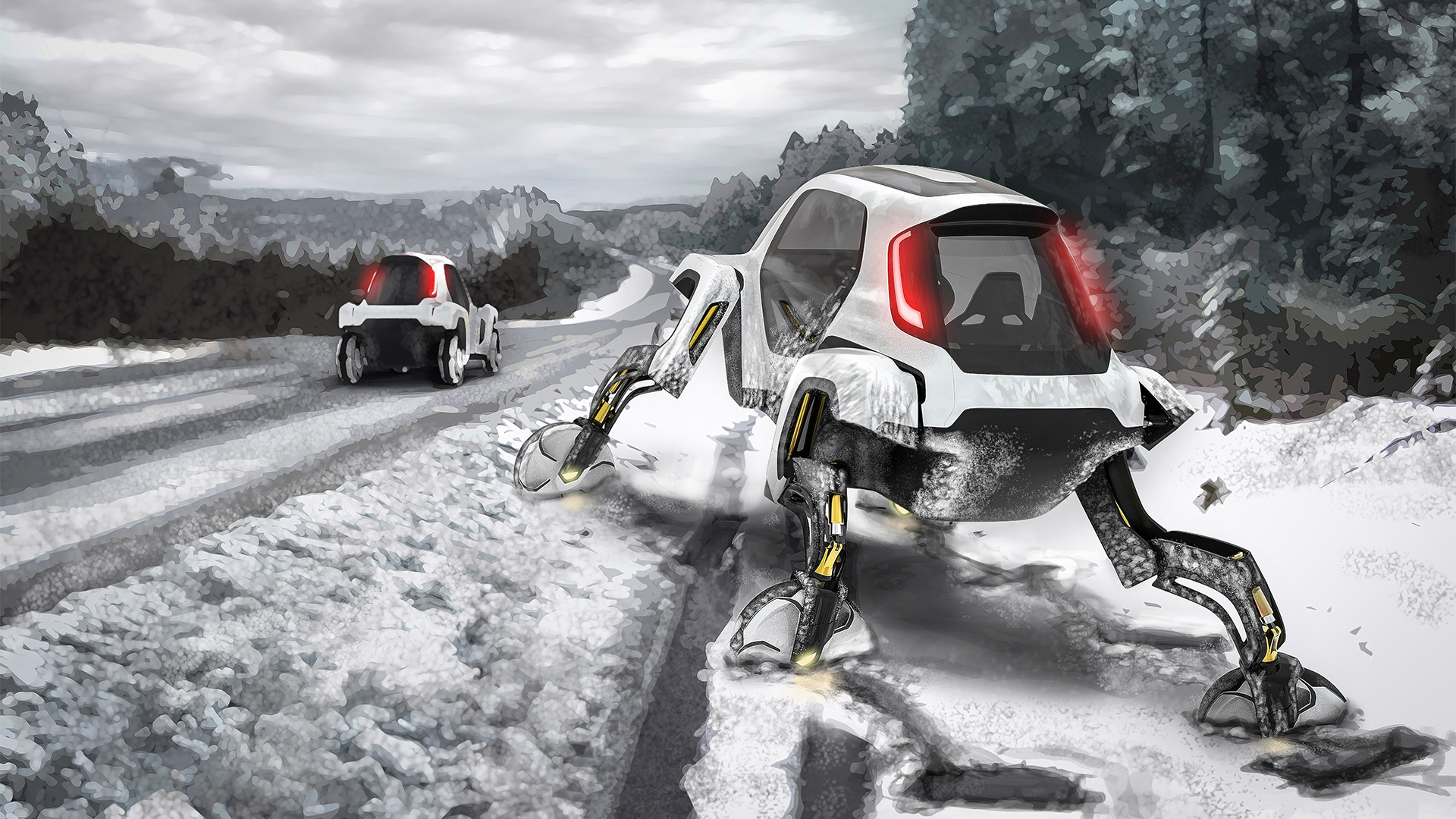
Similarly, Suh and his team have also produced micro and mini unmanned UMVs that act as smaller drone-like autonomous vehicles that could have a number of real-world applications.
When quizzed on these, Suh says that Hyundai is eyeing up a diverse customer base, from search and rescue teams here on earth, to future Mars exploration crews. What's more, the technology could have military applications, while the smaller UMVs could aid in carrying explorer's equipment as they tackle earth's harshest terrains.
"The idea is that our concepts can reach places typical 4x4 vehicles cannot. As well as being able to roll on standard wheels and tires, we have also developed adaptive high range-of-motion suspension – or AHROMS for short – that uses robotics technology to overcome obstacles," Suh explains.
Breaking barriers
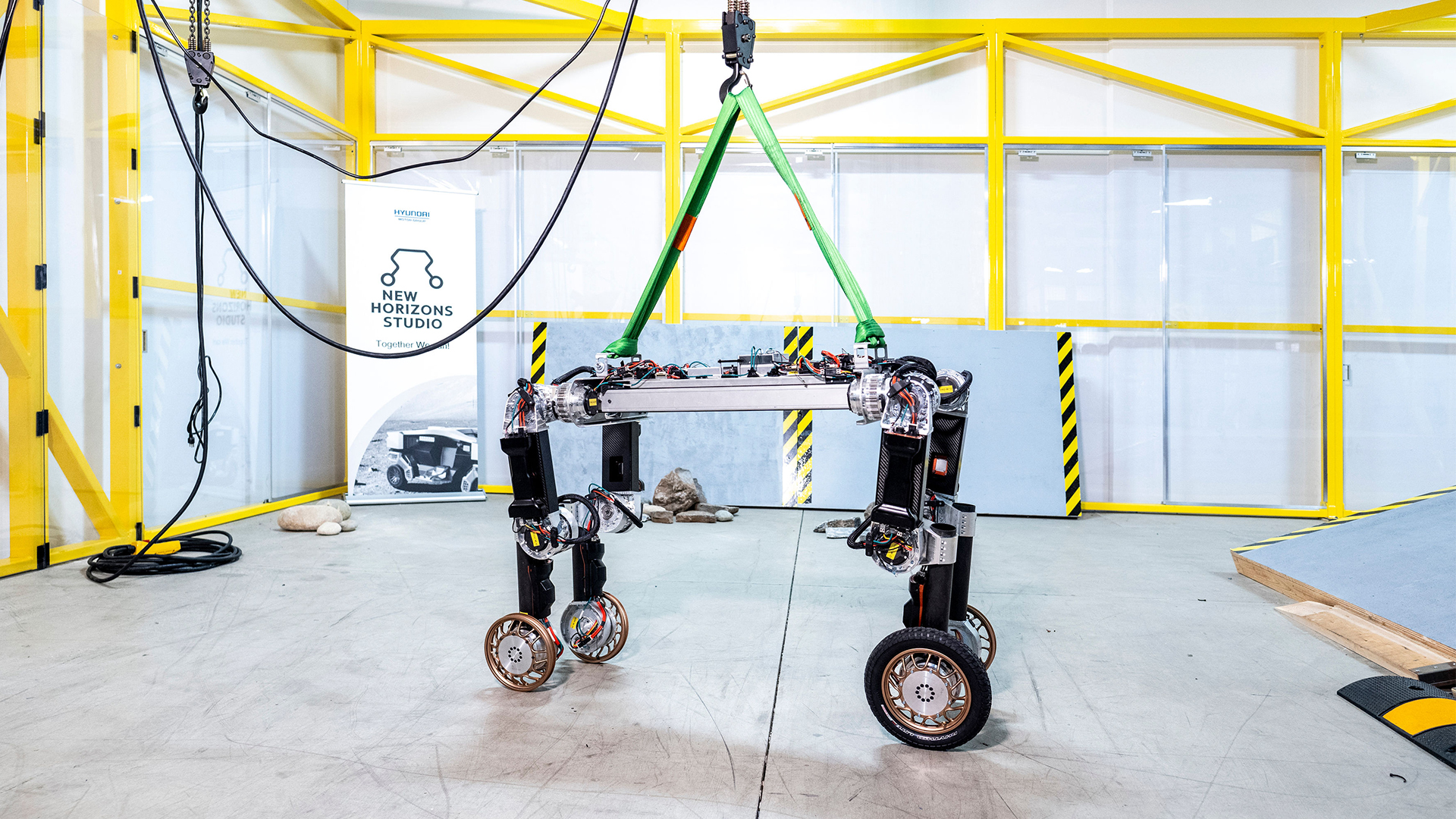
Although Suh was open about the day-to-day at his New Horizons Studio facility, he was a little cagier about demonstrating the tech in action. During a tour, I was permitted to poke around a smaller, 1:8 scale model, complete with the aforementioned AHROMS tech.
It consisted of a basic chassis and four highly robotized 'legs' with wheels. Fairly basic in structure, this particular model featured a series of motors and high torque gear sets, not only powering the wheels but also the actuated joints at the 'hip' and 'knee'.
It was trussed up with most of its internals on show, but gave an idea of what a full-sized version would look like.
"We have been working on a version that can effectively place a leg out to one side in order to steady itself, as well as lift the entire leg up to clear obstacles. In our smaller models, we have even generated enough power to make them jump," Suh says.
In a large cage beside the smaller, dangling model was a full-sized version of the robotic suspension system that when activated, could lift, tilt and spin its single wheel, complete with puncture-proof structural tire, through a full 360-degrees. One of the younger team members even showed me video footage from his phone that shows the robotic leg kicking a soccer ball. Enough power was generated to boot the ball across the room for another team member to catch it.
Although clearly having fun, the engineers pointed out that this kind of power was necessary in order for the AHROMS system to work properly. "It needs to be able to steady itself when clambering over rocks and that requires quick reaction times," one of the team members points out.
In other videos snared on smartphones out in the field, I witness one of the early smaller models speeding along a winding gravel track that wound its way up the side of a mountain. Although hunkered down in its regular driving position, I was impressed at the speed of the thing. It certainly wasn't hanging around.
Further into the facility, workbenches were littered with numerous 3D-printed parts of various chassis set-ups, while a highly configurable, modular cargo carrying system was under development. Again, it was only in 1:8 scale, but proved that the team was already thinking about real-world applications beyond simple technology demonstrators.
"UMVs are designed for highly automated assembly but the cockpit or body that sits on top of the chassis could be completely bespoke," Suh says. Again, Hyundai's expertise in advanced forms of cell manufacturing, like we saw at its newly-opened facility in Singapore, could theoretically provide the means to bring a concept to life.
First steps for the walking car
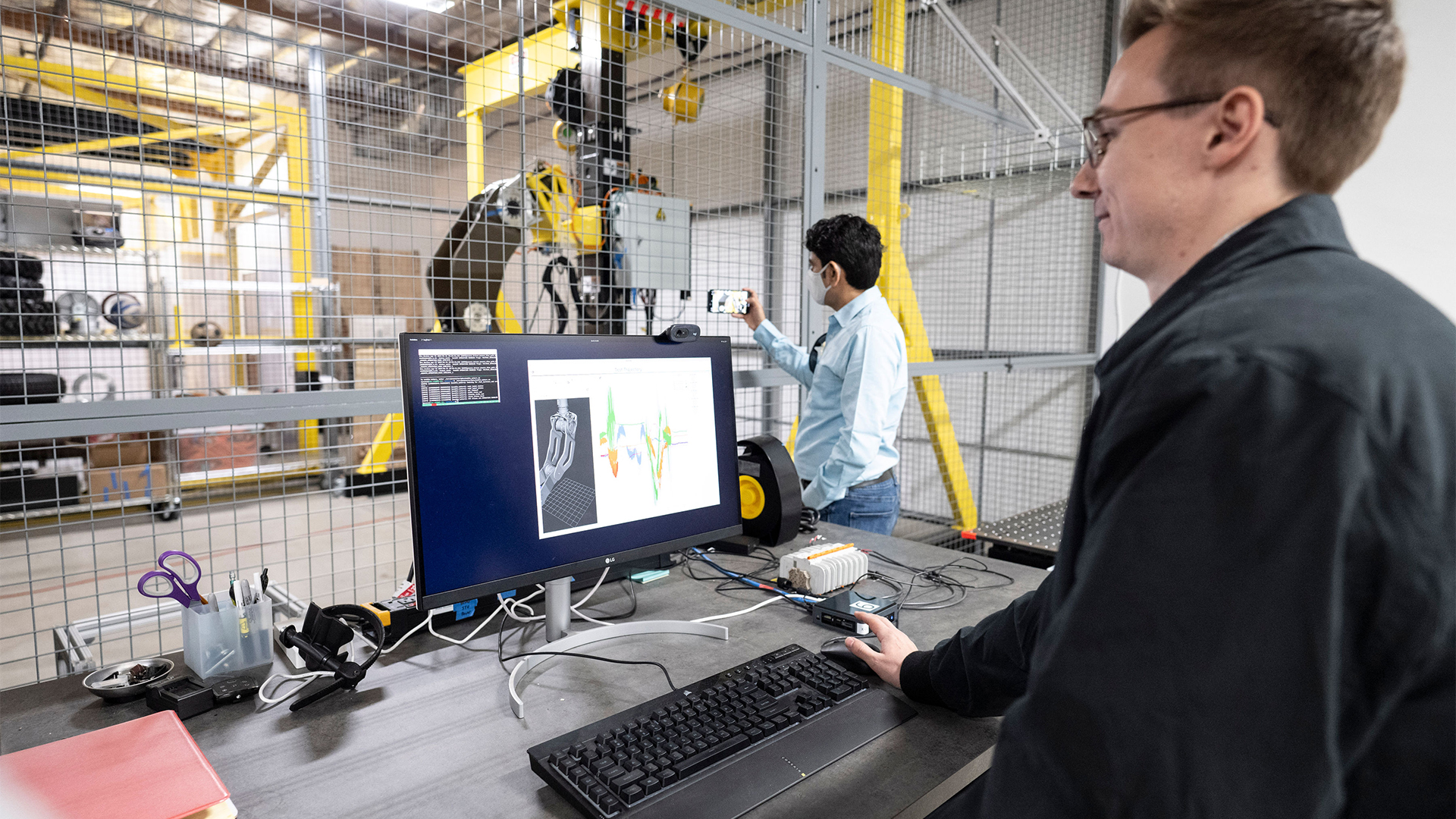
Although easy to write off as pure fantasy, there are many indicators that Hyundai is very serious about developing its UMVs further. For a start, it has just opened another research and development facility in Bozeman, Montana, which takes a direct feed of your hottest new talent from the local well-respected STEM college in Montana State University.
Secondly, Hyundai filed various patents for its walking car technology last year and the New Horizons Studio team have started to lock-in a formula that works best for a full line-up of UMVs, spanning smaller, unmanned versions to behemoths that can transport an entire crew.
Dr. John Suh also states that the project's place within the wider Hyundai group of businesses means he can leverage expertise in various fields, whether that’s Lidar and camera tech from the world of autonomous vehicles, to something like Hyundai Mobis’ MOBION concept, which showcased an EV at this year's CES that was able to 'crab walk' with lateral and diagonal motion, as well as perform stationary pivot turns.
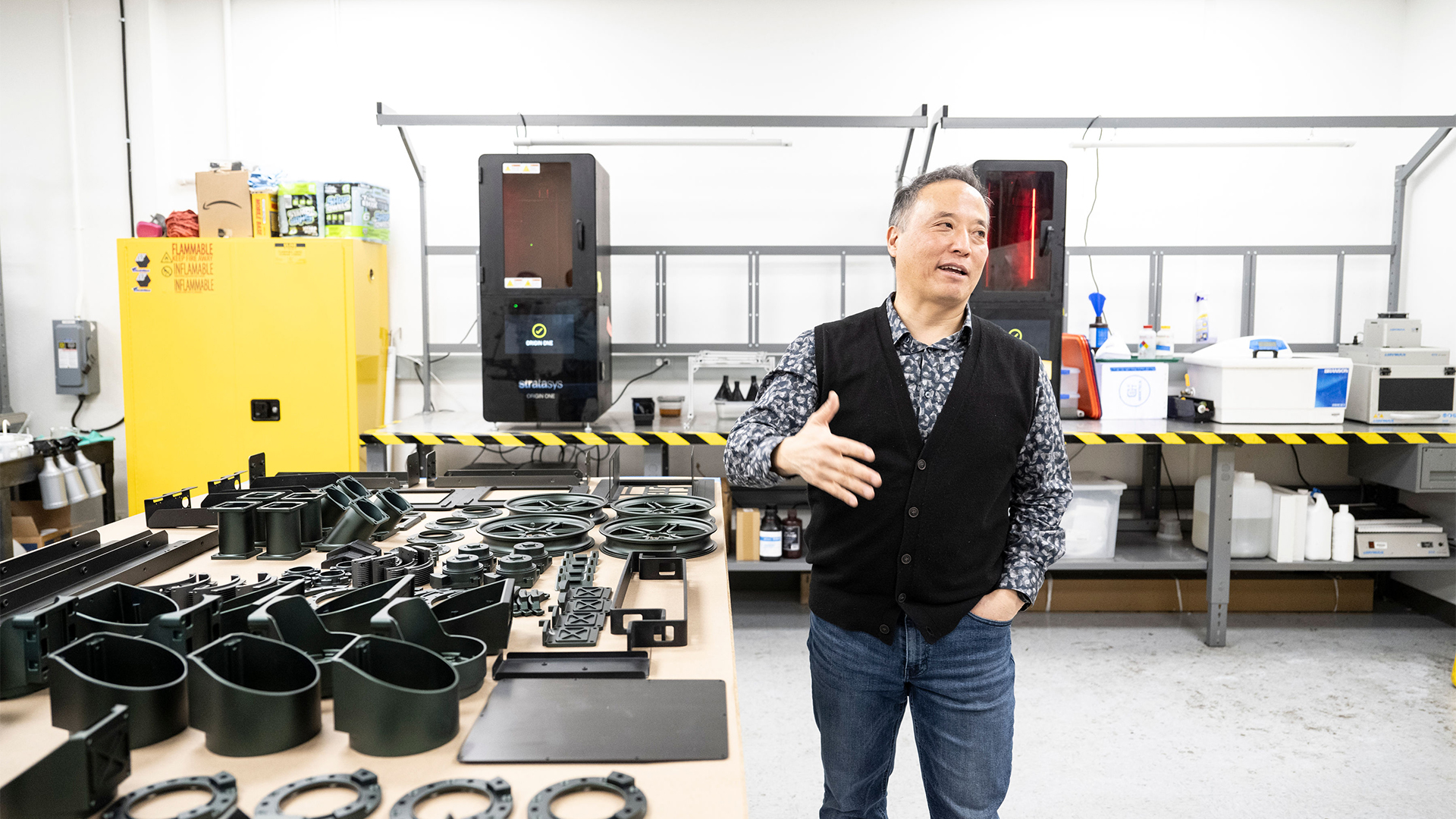
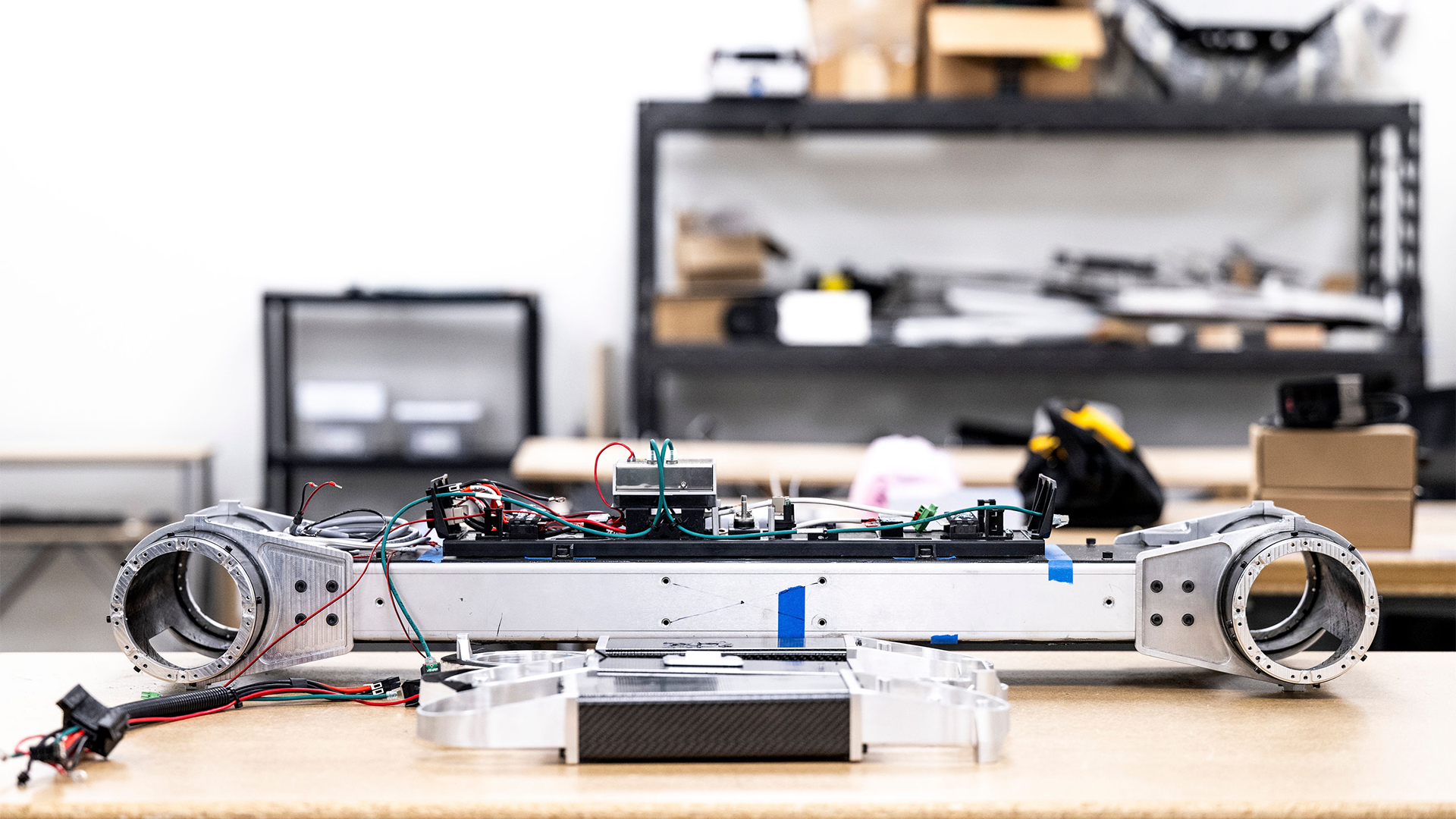
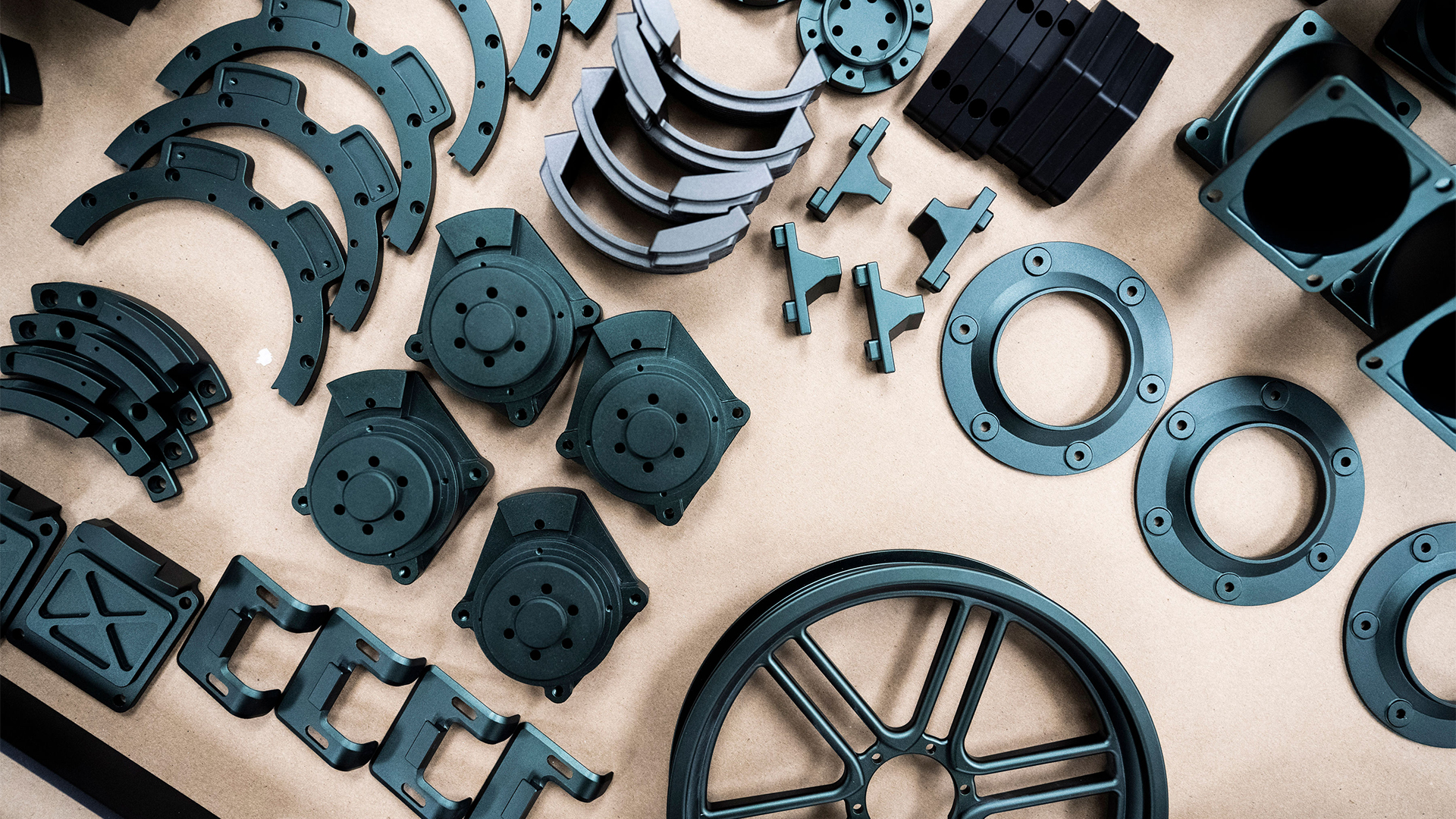
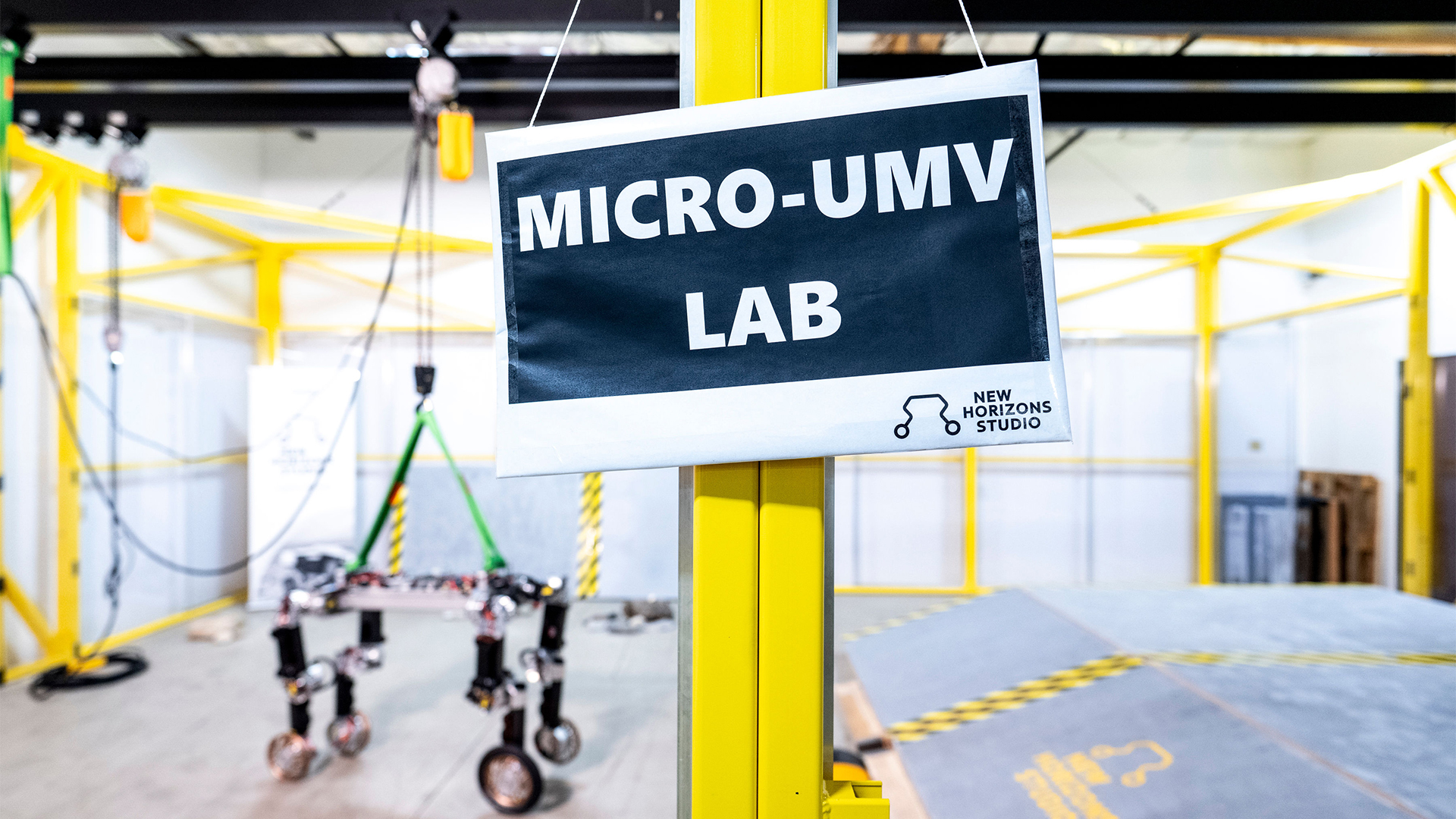
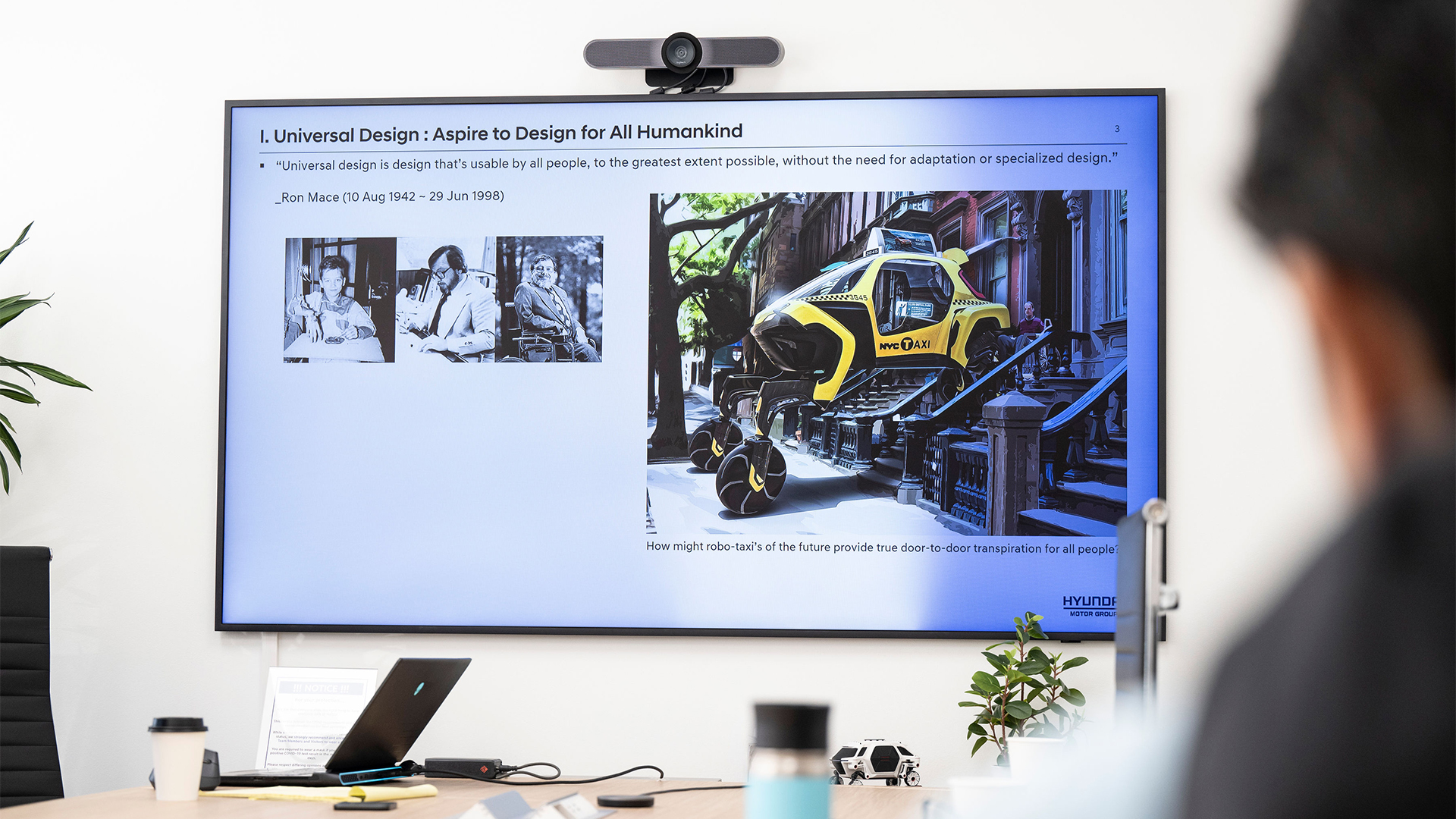
"We have been pursuing various NASA funding programs, but we have never quite been at the right stage of development. It has either been too early or too developed," he says. Suh also states that military usage is another avenue he and the company is keen to explore.
On top of this, a highly autonomous future that coincides with Hyundai’s push into the era of software defined vehicles is front of mind. Here, Suh believes UMVs would allow greater freedoms to those with mobility issues. "Imagine an autonomous taxi that could pull up right to your door, even if you lived on the first floor, and a wheel chair user could enter without issue," he says.
There is no set timescale for UMVs to become a reality, with Dr. Suh predicting his team will make much faster progress over "the next three years". Currently, smaller scale models are undergoing testing in an undisclosed part of the world, while the new Bozeman facility opens up access to miles and miles of unpaved terrain to explore.
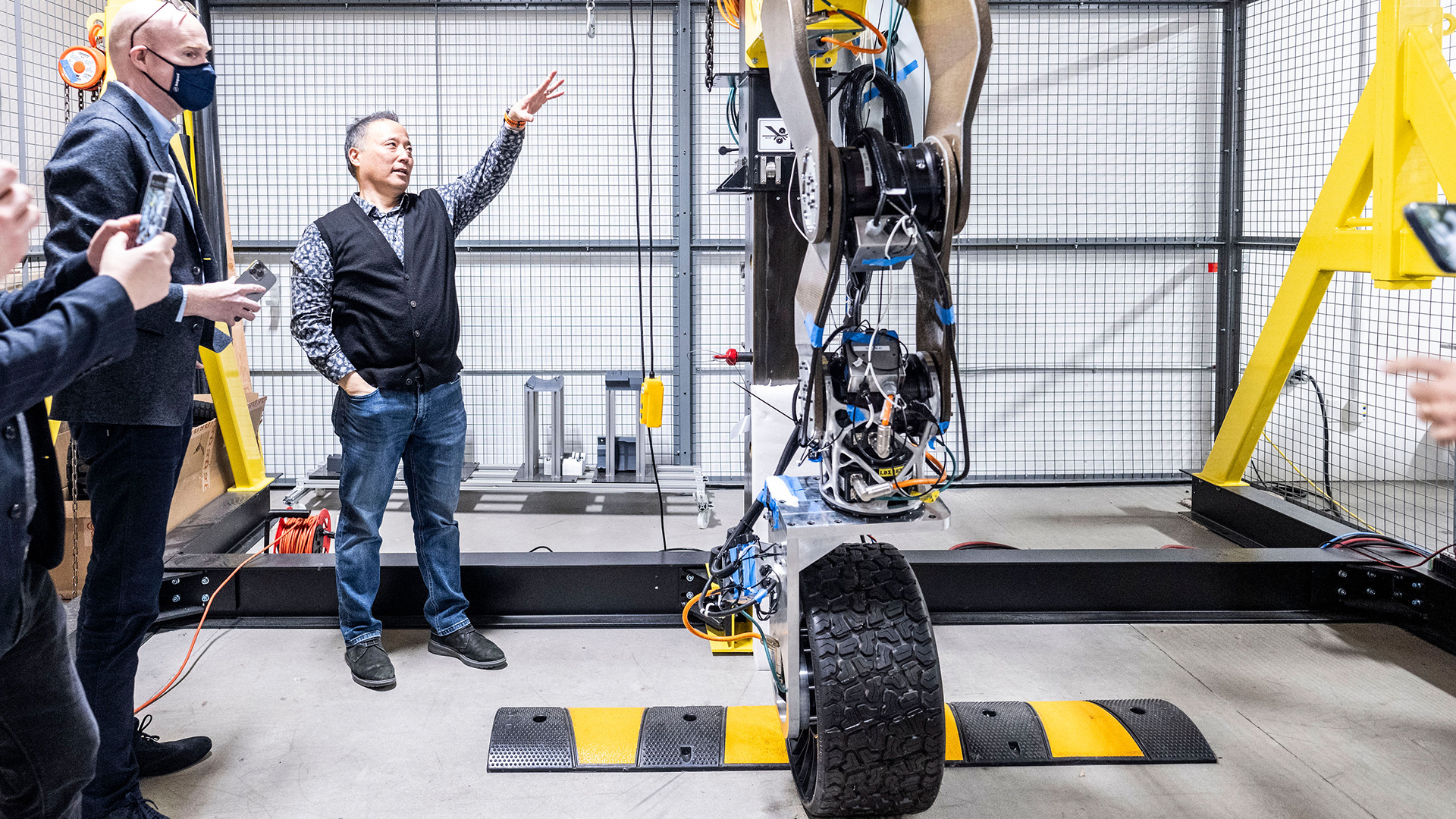
"The next step is showing a working, full-sized model. One that incorporates Lidar and camera technology, as well las autonomous functionality to assist in its operation. But a UMV remains a difficult concept to grasp, they require a complete mindset shift form the team working on them, and those that could one day use them, "Suh adds.
You might also like
- Inside Hyundai’s new sci-fi smart factory – where you can order a car with your smartphone and drive it away in hours
- Hyundai is building its own in-car AI system – and it actually sounds like a good idea
- And that’s how it all started: AI managed to design a robot that walks — from scratch, and in less than 60 seconds







